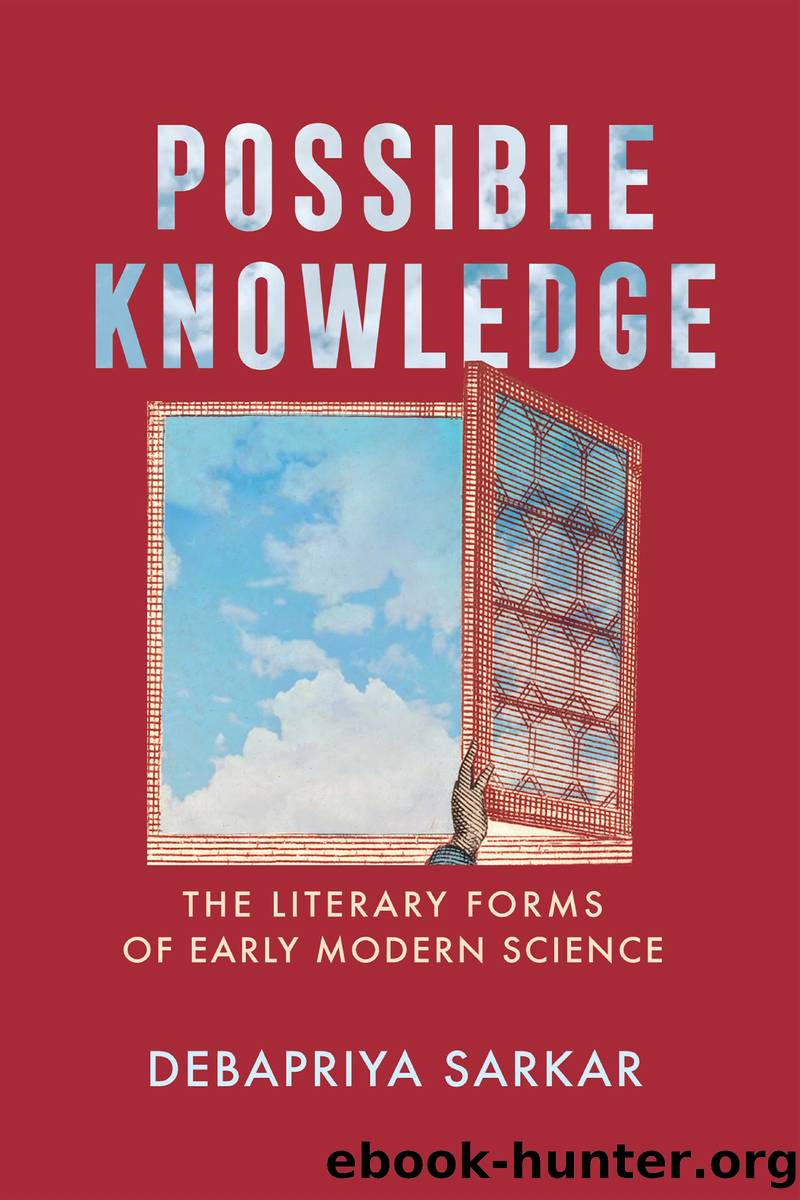Possible Knowledge by Debapriya Sarkar;

Author:Debapriya Sarkar;
Language: eng
Format: epub
Publisher: Lightning Source Inc. (Tier 2)
The Durable Worlds of Vitalist Poetics
When skepticism leads to world annihilation, how does one stabilize fictional worlds? To overcome the disconnect between the creating self and created worldâas well as her fear that she will be âAnnihilated to nothingâ (Poems, and Fancies, âTo Naturall Philosophers,â sig. A6r)âCavendish requires a new physics. Her aspiration to link imaginative production to the creativity of the natural world finds its most harmonious focus in The Blazing World, which enacts how fictional realms constructed out of a vitalist philosophy (in which Nature is volitional and âself-moving,â composed of sensitive and rational matter) are more compatible with the authorial self with which she identifies. By applying a different philosophy of Nature to create more durable fictional universes, Cavendish seems to resolve a key question underlying her literary ambitions: How might the materialist cosmos best serve the ânaturalâ author in her act of making âfictionâ from her âfancyâ?
The Blazing World is physical poetics at its most ambitious, and perhaps most successful. The changeable natural world offers both matter and method for creation; modeling fictive realms on Natureâs variability results in a hybrid form in which we witness the evolution of utopia and to which we can trace the origins of science fiction.35 The culmination of Cavendishâs prolonged efforts to harmonize the authorâs relation to Nature, The Blazing World reflects a realization that shifts in poiesis demand an adjustment of physics. Earlier in this chapter I proposed that Cavendish needs a revised physics only when she is writing in prose. Based on our study of the rifts between self and world that occur in Poems, and Fancies, we can now refine this claim: she must renounce atomism for the sake of creating durable fictional worlds.
As she foregrounds the epistemological underpinnings of poiesis in her later works, Cavendish yokes together the realms of words and things that English natural philosophers had been trying to separate. In the paratextual materials of The Blazing World, she underscores the distinct work of âfancyâ by theorizing the entanglements of truth and fabrication. She highlights the epistemic values of fancy by connecting its origins to that of reason: âThe end of reason, is truth; the end of fancy, is fiction: but mistake me not, when I distinguish fancy from reason; I mean not as if fancy were not made by the rational parts of matter; but by reason I understand a rational search and enquiry into the causes of natural effects; and by fancy a voluntary creation or production of the mind, both being effects, or rather actions of the rational parts of matterâ (âTo the Reader,â 123â24). Fancy is as substantial as reason, and they both represent activities rather than fixed entities. They originate in the ârational parts of matter,â but the mindâs activities aim toward different ends. Thus, instead of distinguishing fact from fiction along an axis of truth and falsehood, we need to recognize âtruthâ and âfictionâ as distinct end points of the exercise of ârational parts of matter.â Fancy emerges from within the creatorâs mind and mirrors Nature as a repository of âvoluntary creation.
Download
This site does not store any files on its server. We only index and link to content provided by other sites. Please contact the content providers to delete copyright contents if any and email us, we'll remove relevant links or contents immediately.
The remains of the day by Kazuo Ishiguro(7551)
Tools of Titans by Timothy Ferriss(6950)
The Black Swan by Nassim Nicholas Taleb(6192)
Inner Engineering: A Yogi's Guide to Joy by Sadhguru(5897)
Giovanni's Room by James Baldwin(5879)
The Way of Zen by Alan W. Watts(5800)
The Six Wives Of Henry VIII (WOMEN IN HISTORY) by Fraser Antonia(4791)
The Power of Now: A Guide to Spiritual Enlightenment by Eckhart Tolle(4756)
Astrophysics for People in a Hurry by Neil DeGrasse Tyson(4620)
Asking the Right Questions: A Guide to Critical Thinking by M. Neil Browne & Stuart M. Keeley(4576)
12 Rules for Life by Jordan B. Peterson(3734)
The Ethical Slut by Janet W. Hardy(3504)
Skin in the Game by Nassim Nicholas Taleb(3462)
Housekeeping by Marilynne Robinson(3402)
The Art of Happiness by The Dalai Lama(3385)
Double Down (Diary of a Wimpy Kid Book 11) by Jeff Kinney(3274)
Skin in the Game: Hidden Asymmetries in Daily Life by Nassim Nicholas Taleb(3264)
Walking by Henry David Thoreau(3234)
12 Rules for Life: An Antidote to Chaos by Jordan B. Peterson(3204)
